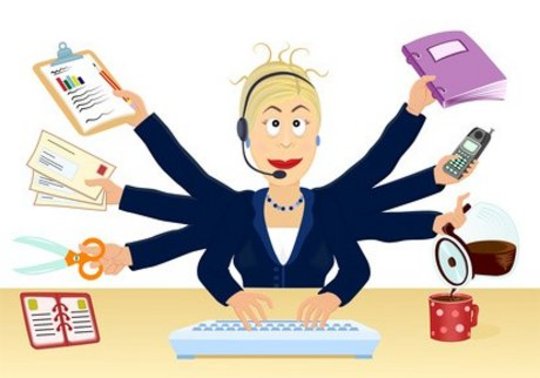
Overwhelm can be defined as the pursuit of multiple external goals without a clear inner purpose. We can become so consumed by our life plan and its long to-do list that we lose all connection to life. Life becomes the insane burden of a thousand things to do. We’re prone to become overly concerned with the future, pursuing things we think we need and don’t have instead of appreciating what we do have at this moment, right now, where our life is actually happening.
This is not to say that external goals are unimportant. Of course they are. They put a roof over our head, money in our pocket, and food on our table, and once our basic needs are met, they help improve our lot in life. In addition, external goals stretch us to realize more of our innate potential. But if our state of mind is governed by the ups and downs of external goals, our life becomes an emotional merry-go-round.
We often mistakenly believe that achieving an external goal will give us peace and make us happy, but it is not in the nature of external goals to give peace or happiness, at least not to the degree that matters. Temporarily, achieving the goal may provide a sense of elation, accomplishment, or relief, but not lasting peace or happiness.
Soon the elation fades into the shadows of the next problem the world imposes. Moreover, research has found that only about 10 percent of our happiness stems from changes in our life situation, meaning we only get a 10 percent lift if we transition from poor to rich, or move from a smaller to a bigger house, or get promoted, or even find our soul mate.
On the other hand, 40 percent of our happiness rises or falls depending, on the quality of our mental state. That’s the place to make the investment if happiness matters to you.
External Goals and Internal Goals
Peace, happiness, and joy come from within, not from the world. They are not a thing the world gives or takes away. They are a state of mind we choose, regardless of circumstances. The world is just too unfair and too mercurial to trust with our consciousness. The person you want to be, the life you wish to lead, the purpose you long to fulfill, are too important to leave to chance. They require a clear inner purpose that you put first as you work for the Good Life. The irony is that when a clear inner purpose becomes your primary goal, all your other goals have a way of working out.
So, to summarize, the things you want to achieve in the world represent your external goals. The qualities you want to accentuate within yourself as you pursue external goals represents your inner purpose. The outcome is holistic; it’s a happier, more peaceful human being working toward a better situation. The challenge is to get clear about your inner purpose and put it first, so that the way you want to be flows easily into whatever you need to do to get ahead.
Integrate your "To Be" List with Your "To Do" List
The simplest way I’ve found to infuse a clear inner purpose with external goals is to integrate your to-be list into your to-do list. You list in one column the external goals you want to achieve in three areas of your life: business, family, and health. This is your to-do list. Next, you list qualities you want to succeed in being as you work toward the external goal you listed. You can assign more than one quality to an external goal; this is your To-Be List. When you’ve completed the worksheet, post it where you will see it, as a reminder of how you want to be as you work to accomplish your goal.
Commit to looking at the worksheet often during the day. As you do, imagine how you might apply the quality you want to accentuate. For example, if you want to be more open-minded, receptive, and accepting with other people, imagine yourself listening better and judging less as you work with others. Expect the desired change to happen. Expectancy is why placebos work.
Expectancy will also propel your inner purpose to the forefront of your day. The more you focus your attention on the quality you want to change or accentuate, the stronger that quality will become, until eventually it becomes your autopilot. This is not to say you won’t fail at times, but don’t let failure stop you. Choose again how you want to be. Success is guaranteed if you don’t quit.
A Word on Multitasking
 Another way we become overwhelmed is multitasking. The “smart” technologies of the twenty-first century have us believing that we can actually juggle ten balls at once, but doing so can lead to overwhelm. We think we’re great multitaskers, able to talk on the phone while we’re proofing a document, checking a text message, and sending an email. But there is, at best, a two-task limit on what the human brain can handle.
Another way we become overwhelmed is multitasking. The “smart” technologies of the twenty-first century have us believing that we can actually juggle ten balls at once, but doing so can lead to overwhelm. We think we’re great multitaskers, able to talk on the phone while we’re proofing a document, checking a text message, and sending an email. But there is, at best, a two-task limit on what the human brain can handle.
We’ve all experienced those moments when the brain loses track of all the tasks it’s trying to accomplish at once. Suddenly you don’t know where you are now, where you were last, and where you need to go next. Those moments can set off the stress response system, which means you’re likely to freeze up or blow up.
Researchers at Stanford University found that multitasking may even impair cognitive control. Anthony Wagner, one of the researchers in this study, said, “When you’re in situations where there are multiple sources of information coming from the external world or emerging out of memory, you’re not able to filter out what’s not relevant to your current goal. That failure to filter means you’re slowed down by that irrelevant information.” In one study, multi-taskers were found to take 40 percent longer to get something done.
Another study even found that drivers talking on cell phones took longer to reach their destinations. Multitaskers also make twice as many errorsand are more stressed than people who don’t multi-task. And stress, as you now know, means a loss of the brainpower required to get things done, and to get them done well.
I’ve found that the best thing to do when you find that multi-tasking is getting out of hand is to first stop everything you’re doing. Take a deep breath and follow your breathing for a moment. Be present, here and now, and let your mind relax. If you’re still feeling overwhelmed, consider going for a walk.
Once you are feeling calm and ready to go back to work, make a list of everything you were trying to do and select just one item to focus on. Focus on completing that one task with the aim of doing it well.
Speed Bumps
Let’s cover one last thing before closing the discussion on overwhelm. It’s about a simple shift in mind-set that can transform an irritating moment, which I call a speed bump, into a gentle tap on the shoulder that reminds you to choose peace.
Speed bumps are those annoying disturbances that happen when you need to concentrate, or when you’re under pressure to get something done. It’s someone at your door interrupting you with a problem when you’re working to meet a deadline. It’s a printer that stops printing. It’s a warning light on your car’s dashboard that says you’re running out of gas when you’re late for a meeting. It’s noticing a stain on your clothes just before you’re about to make a presentation.
I invite you to practice calling these annoyances speed bumps. For example, if an unavoidable interruption happens, wait for the wave of aggravation to pass and then simply say to yourself, Speed bump. Use the phrase as a reminder to stop and smell the roses for a few seconds. Tell yourself, I could see peace instead of this. Take a breath, become present, and laugh at the human comedy we are all living though. Then relax for a moment, wake up to the present, and remember that your inner purpose is peace.
©2014 Don Joseph Goewey. Reprinted with permission
from Atria Books/Beyond Words Publishing.
All Rights Reserved. www.beyondword.com
Article Source
 The End of Stress: Four Steps to Rewire Your Brain
The End of Stress: Four Steps to Rewire Your Brain
by Don Joseph Goewey.
Click here for more info and/or to order this book on Amazon.
About the Author
 Don Joseph Goewey managed the department of psychiatry at Stanford Medical School, ran a regional emergency medical services system, and for twelve years headed an internationally recognized institute that pioneered an approach to catastrophic life events. He has worked with some of the most stressful situations on earth. He innovated a model for changing brain structure to extinguish stress reactions and amplify the higher brain function that enables a human being to flourish. The success of the model in helping people end stress in high-pressure workplaces like Cisco Systems and Wells Fargo has been unprecedented.
Don Joseph Goewey managed the department of psychiatry at Stanford Medical School, ran a regional emergency medical services system, and for twelve years headed an internationally recognized institute that pioneered an approach to catastrophic life events. He has worked with some of the most stressful situations on earth. He innovated a model for changing brain structure to extinguish stress reactions and amplify the higher brain function that enables a human being to flourish. The success of the model in helping people end stress in high-pressure workplaces like Cisco Systems and Wells Fargo has been unprecedented.
Watch an interview with Don Geowey: Rewire Your Brain: Turn Off Stress


























